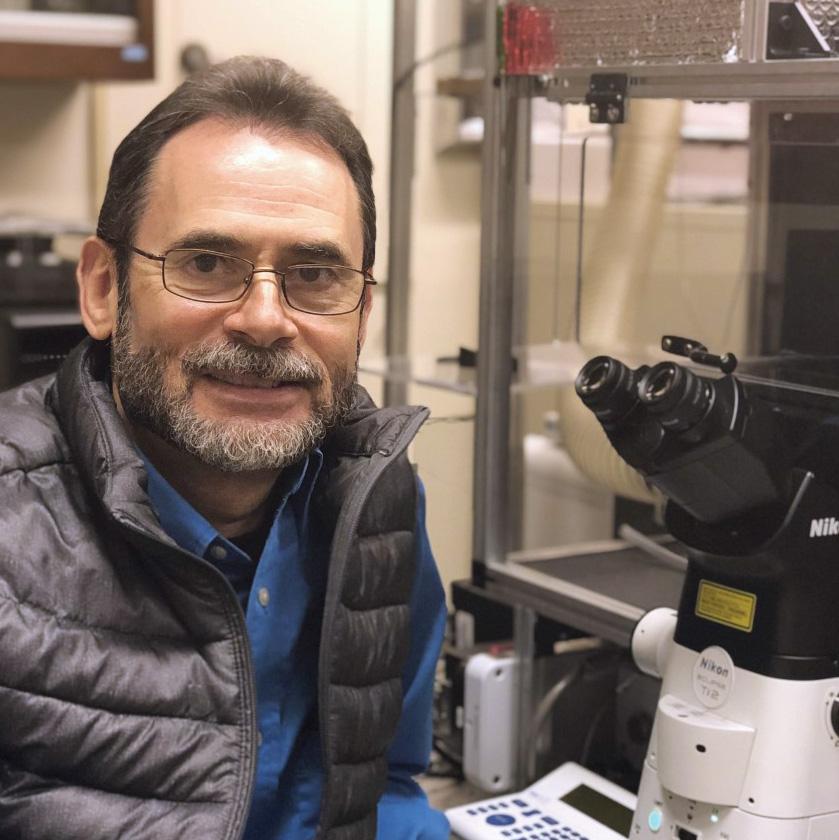Alexey Khodjakov, PhD
We use laser microsurgery and sophisticated imaging techniques (light- and electron microscopy) to study molecular mechanisms responsible for faithful segregation of chromosomes during mitosis (cell division). The mitotic apparatus, a.k.a. the spindle, is a dynamic, self-assembling molecular machine and the goal of mitotic spindle assembly is to connect each chromosome to the centrosomes that form two opposite poles of the spindle via bundles of special polymer fibers (microtubules). Attachment of microtubules to the chromosomes is mediated by a macromolecular assembly on the chromosome body termed the kinetochore. When a human cell enters mitosis the 46 chromosomes are randomly scattered in space. In just a few minutes microtubules growing from the spindle poles manage to find each and every kinetochore and attach it to the spindle.
The question we seek to answer is how this seemingly impossible task is achieved. Laser microsurgery allows us to selectively ablate individual centrosomes, kinetochores, or break microtubule bundles and then observe the consequences of these specific perturbations. In essence, we are trying to understand how the system operates by breaking its individual components. Our research has revealed that cells lacking centrosomes still enter mitosis and form a functional mitotic spindle. Under this condition, microtubules are assembled directly at the kinetochores. This finding demonstrates that cells possess multiple mechanisms for mitotic spindle assembly but the existence of the additional mechanisms is normally obscured in the presence of centrosomes.
Currently we are investigating to what extent centrosome-independent microtubule assembly contributes toward normal spindle formation. To this end we recently developed a new assay that allows us for the first time to follow the movements of centrosomes and individual kinetochores in diploid human cells with high temporal resolution and in 3-D space. Analyses of chromosomal trajectories and the changes induced in the chromosome behavior by siRNA inactivation of different molecular motors will shed a new light on the contributions of centrosomal and vs. kinetochore-mediated microtubule organization pathways.
Our laser-microsurgery experiments also established that centrosomes can form in human somatic cells via de novo assembly. This de novo pathway leads to formation of multiple centrioles and thus its activation leads to pathological conditions due to an improper number of spindle poles (multipolar mitosis). In fact, the presence of supernumerary centrosomes is a hallmark of malignant tissues. Fortunately, centrosome de novo assembly is completely inhibited in the presence of mature centrosomes but it activates immediately upon ablation of the last resident centrosome. Together these results demonstrate that cells possess a mechanism that monitors the presence of a centrosome in the cell. The nature of this mechanism is unknown and we are investigating potential molecules and pathways that might be responsible for the coordination between centrosome duplication and de novo assembly.

